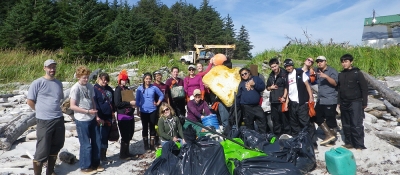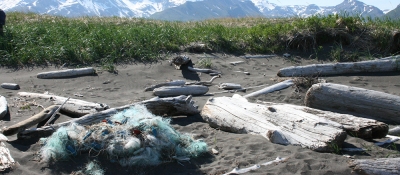The NOAA Marine Debris Program offers several nationwide, competitive funding opportunities for marine debris projects. These include: marine debris removal grants; prevention through education and outreach grants; and research grants. Learn more about these opportunities.
Alaska
The marine debris problem is different in Alaska than in other parts of the United States. With an extensive, rugged, and remote coastline, longer than the rest of the United States combined, addressing marine debris in this region requires innovative and creative approaches.
Since 2006, the NOAA Marine Debris Program has worked with partners to conduct debris research, removal, and prevention, directly funding more than 20 projects in Alaska that have removed about 450 metric tons of debris from shorelines. On many beaches, removal efforts are paired with surveys to determine debris re-accumulation rates and track changes in the type of debris that comes ashore.
Hot Topics
- Marine debris generated by the 2011 tsunami in Japan continues to wash up on shorelines in the United States, including Alaska. Learn more about tsunami debris and our efforts to address it.
- Lose the Loop! Derelict nets, line, traps, and packing bands can entangle and entrap marine species, such as Alaska's Steller sea lions and northern fur seals, indiscriminately.
Image Gallery
Gyre: Creating Art From a Plastic Ocean
Video
Regional Coordinator
Peter Murphy
peter.murphy@noaa.gov
Funded Partners in the Region
FAQs
Tsunami debris began arriving on U.S. shores in the winter of 2011-2012 and has continued washing ashore in a scattered fashion ever since, mixing in with chronic marine debris. This pattern will likely continue. Beachgoers may notice an increase in debris on beaches, in addition to marine debris that normally washes up, depending on where ocean currents carry it.







